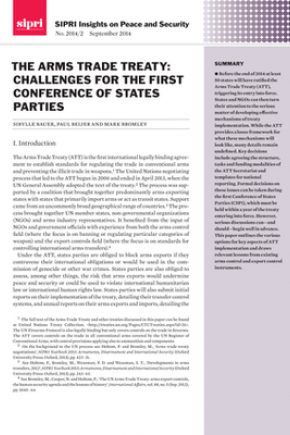The Arms Trade Treaty: Challenges for the First Conference of States Parties
Before the end of 2014 at least 50 states will have ratified the Arms Trade Treaty (ATT), triggering its entry into force. States and non-governmental organizations can then turn their attention to the serious matter of developing effective mechanisms of treaty implementation. While the ATT provides a loose framework for what these mechanisms will look like, many details remain undefined. Key decisions include agreeing the structure, tasks and funding mechanisms of the ATT Secretariat and templates for national reporting.
Formal decisions on these issues can be taken during the first Conference of States Parties (CSP1), which must be held within a year of the treaty entering into force. However, serious discussions can—and should—begin well in advance. This paper outlines the various options for key aspects of ATT implementation and draws relevant lessons from existing arms control and export control instruments.
I. Introduction
II. The current state of play in the ATT process
III. Conclusions



